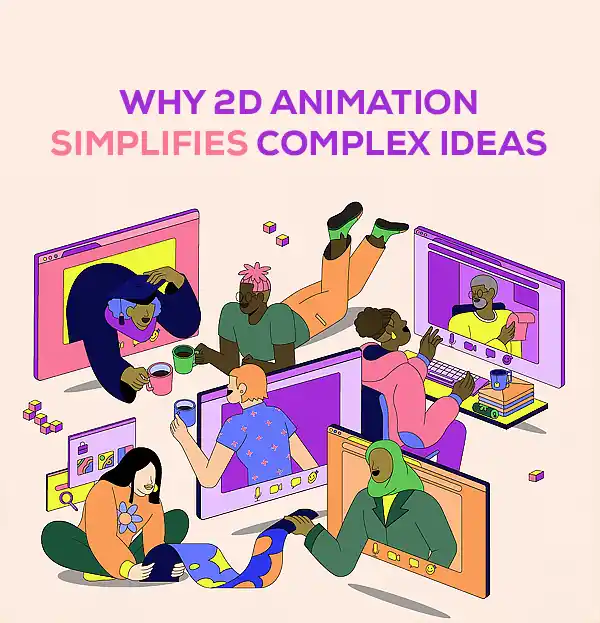
Why 2D Animation Simplifies Complex Ideas
In today's fast-paced world, effectively communicating complex ideas is a crucial skill, especially for businesses and educators. One of the most powerful tools for simplifying intricate concepts is 2D animation. By combining visuals with storytelling, 2D animation breaks down challenging topics, making them accessible, engaging, and easy to understand. Whether used in marketing, education, or corporate training, 2D animation offers clear and concise explanations that help audiences grasp difficult material with ease.
Humans are naturally visual creatures. Studies have shown that we process visual information much faster than text. Research indicates that visuals are processed 60,000 times faster than text. This means 2D animation’s ability to present complex ideas visually helps viewers quickly absorb and retain information. By converting abstract concepts into easy-to-understand visuals, 2D animation simplifies communication, ensuring your message is not only received but also remembered.
For example, imagine explaining a complicated process like supply chain logistics. A 2D animated video can showcase the various stages—supplier, manufacturer, distributor, and customer—in an easy-to-follow sequence. Instead of lengthy descriptions or confusing graphs, the animation presents the information step by step, allowing viewers to visualize the flow of goods.
The Power of Storytelling and Simplification
A key strength of 2D animation is its storytelling ability. People naturally connect with stories, and combining them with visuals strengthens this connection. Embedding complex ideas into a narrative helps explain concepts in a relatable way. For instance, when explaining how a new software tool works, a 2D animation can feature characters using the software to solve real-world problems. This approach makes explanations more engaging and helps viewers understand the tool's practical applications.
2D animation also breaks down complex ideas into manageable chunks, preventing audiences from feeling overwhelmed. This gradual approach ensures each part is understood before moving to the next. In education, this is particularly useful. Teaching subjects like physics or math often involves abstract material. With 2D animation, teachers can visually demonstrate concepts like gravity or geometric theorems, making them more tangible and easier to understand.
Tangible Visuals and Lasting Impressions
Abstract ideas like business models, economic principles, or scientific theories can be hard to grasp. 2D animation turns these into relatable visuals. For example, illustrating inflation with characters buying products while prices rise makes the concept clearer. 2D animation is also adaptable. Whether a playful style for younger viewers or a sleek design for professionals, it can be tailored to suit different audiences, ensuring effective communication.
2D animation helps with engagement and retention. Studies show 90% of information transmitted to the brain is visual, and dynamic visuals improve recall. In marketing, animated explainer videos effectively break down complex products or services, leaving a lasting impression. By combining visuals with storytelling, businesses can communicate their offerings in a way that resonates and drives action.
Conclusion
2D animation simplifies complex ideas, making them engaging and memorable. From educational content to marketing videos, it allows businesses, educators, and creators to turn intricate concepts into digestible stories. As technology advances, 2D animation will remain an indispensable communication tool.